

Click on the
octopus to return to
the top of the page

Authors:
Michael L. Brennan, James P. Delgado, Larrie D. Ferreiro,
Josh Broussard, & Michael Arbuthnot.
The discovery of the sunken remains of the battleship USS
Nevada (BB-36) by Ocean Infinity and SEARCH Inc. in 2020
provided the means for documentation, site mapping, and
characterization of a deep-water shipwreck with an iconic
history that spanned half a century of profound change in
the world in response to two world wars, shifting
geopolitics and technological development that concluded
with the advent of the atomic age.

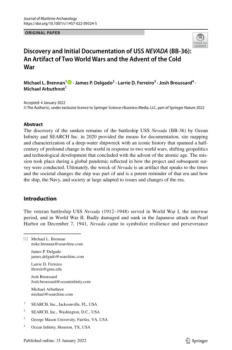

Authors:
Johannes Reich, Philipp Steiner , Ariane Ballmer, Lea
Emmenegger, Marco Hostettler, Corinne Staheli, Goce
Naumov, Bojan Taneski, Valentina Todoroska, Konrad
Schindler, & Albert Hafner.
This article presents a novel methodology for the
underwater documentation of pile fields in archaeological
lakeside settlement sites using Structure from Motion (SfM).
Mapping the piles of such sites is an indispensable basis for
the exploitation of the high-resolution absolute
chronological data gained through dendrochronology. In a
case study at the underwater site of Ploca, Micov Grad at
Lake Ohrid, North Macedonia, nine consecutive 10 m2
strips and a 6 m2 excavation section were uncovered, the
situation documented, and the woodpiles sampled.

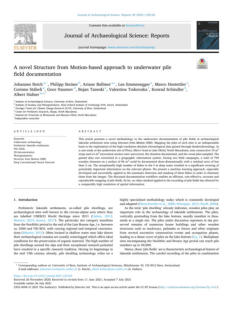

Author: John Tomkinson
This paper is a historical study of the evolution of cannons
during the 15th century.
Some readers may be surprised with an article that does not
discuss diving. The reason is that cannons are often
elements that can be used to deduct the age of some
wrecks.

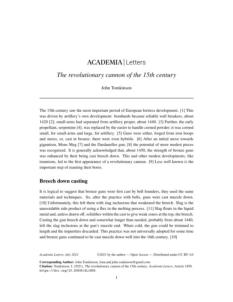

Authors:
Izabela Bodus-Olkowska, Grzegorz Zaniewicz, Piotr Malinski
This paper highlights the synergy between existing remote
sensing technologies and the management of underwater
cultural heritage with examples of ongoing research
projects, such as Malta's approach to considerations of
historical and natural conditions of site elements. Such an
approach allows for the scaling of sites based on several
parameters and provides instructive information for creating
management strategies.

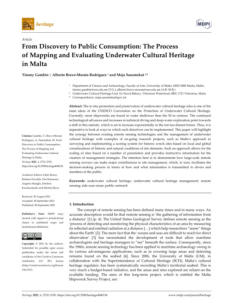

Authors:
Izabela Bodus-Olkowska, Grzegorz Zaniewicz, Piotr Malinski
In August 2020, the authors of this paper realized an
interdisciplinary survey of 12 wrecks located and inventoried
earlier as a part of a project Underwater ethnoarchaeology
of the Lower Oder. The survey was a part of the research
on the classification method of anthropogenic, ferrous,
underwater objects based on magnetic anomaly maps.
Data acquisition involved recording data with an
interferometric echosounder, side-scan sonar, and marine
magnetometer.

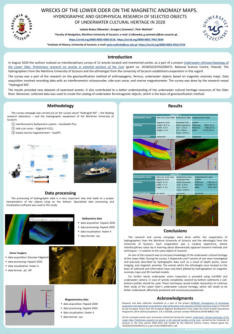

Author: Nathan Richards
The remnants of deliberately discarded watercraft have
been a subject of maritime historical and archaeological
inquiry for some time. Studies of ships re-utilized as ancient
boat burials (such as the Snape Boat), votive offerings, or
transformed into foundations, and many types of alternate
structures and buildings are well-known in maritime
archaeological literature.

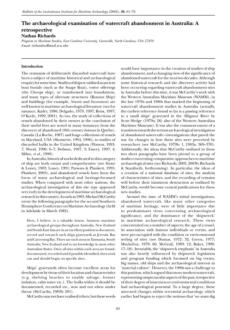

Authors: IA Kirichenko, I B Starchenko, V Y Vishnevezkiy,
A I Markolia, I I Sizov, and T P Strochan
The shallow water environment is one of the most dynamic
elements, subject to rapid sedimentary flows and of
significant interest to human activities. This environment
pose severe challenges due to shallow water, strong waves,
strong currents, large tidal range, and fine gas, which
restrict sound penetration. To optimize the characteristics of
acoustic profiler with a parametric transmitting array in the
scope of underwater archeology and monitoring of
underwater engineering objects, theoretical studies of the
influence of real conditions on the work of parametric
hydro-acoustic systems and of the marine soils and bottom
sediments features are presented in this study.

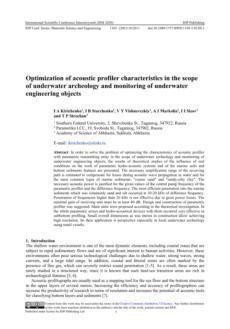

Public access to underwater and maritime cultural heritage
has proven to have a very positive effect on the local
economy. This type of heritage is very attractive for the
cultural tourism sector in general and active and diving
tourism. The Nautical and Underwater Archeology Line of
the University of Cadiz, within the framework of the TIDE
Project and Herakles Project, have been working on the
enhancement of maritime and underwater heritage
through the application of new technologies. This paper
presents the advances in the project in the Strait of Gibraltar,
based on the first phase of scientific analysis and the
defnition of a common working methodology with resulted
in a toolkit for the development of tourism activities.

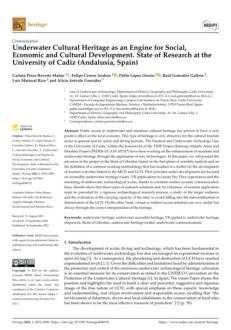

Authors:
Joanne Edney, Kay Dimmock, and William E. Boyd
Successful underwater heritage management requires a
sound understanding of visitor behavior. Primary visitors to
underwater heritage sites are divers whose behavior can
pose risks to the integrity of the site's cultural heritage and
tourism values. This study seeks to understand wreck diver in
-water behavior.

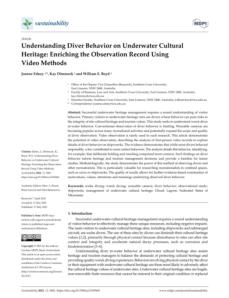

Authors:
I A Kirichenko, I B Starchenko, V Y Vishnevezkiy, A I Markolia,
I I Sizov, and T P Strochan
The results of theoretical studies of the influence of real
conditions on the work of parametric hydro-acoustic
systems and of the marine soils and bottom sediments
features are presented in this study to solve the problem of
optimizing the characteristics of acoustic profiler with a
parametric transmitting array in the scope of underwater
archeology and monitoring of underwater engineering
objects.

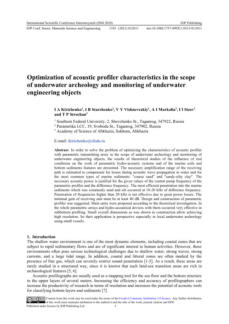

The Virginia Institute of Marine Science (VIMS) Scientific
Diving Program has supported the VIMS Dive Team with
training and equipment since 1983.
This manual is a modified version of the 2018 American
Academy of Underwater Science (AAUS) standards
(.https://www.aaus.org/AAUS)

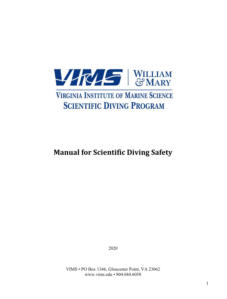

Author: Daniele Castrizio
The paper examines the coins discovered in the Antikythera
wreck by sponge fishermen in 1900 near the island of
Antikythera. The excavation yielded numerous artifacts,
including the famous Antikythera mechanism and human
remains. Researchers have debated the date and origin,
using sources such as pottery and writings. In 1976, 36
silver and approximately 40 bronze coins were discovered,
all of which were corroded. Studying these coins,
particularly their origin in the Aegean or Sicilian, helps us
learn more about the ship's history.

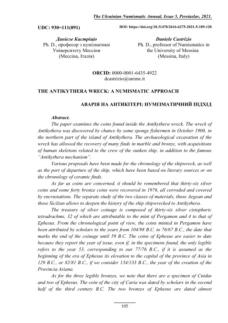

Authors:
Aksel Alstad Mogstad, Øyvind Ødegård, Stein Melvær
Nornes, Martin Ludvigsen, Geir Johnsen, Asgeir J. Sørensen,
& Jørgen Berge
This study was conducted on the wreck site of the Figaro, a
floating whalery that sank in 1908 and was discovered in
Trygghamna, Isfjorden, Svalbard. Multiple remote sensing
techniques have been used to survey and analyze the
wreck site, emphasizing the advantages of using
complementary methods such as photogrammetric 3D
modeling and underwater hyperspectral imagery. The
study also highlights the findings related to biofouling levels
on different marine archaeological substrates and suggests
that high-density biological assemblages could help identify
human-made artifacts on the seafloor.

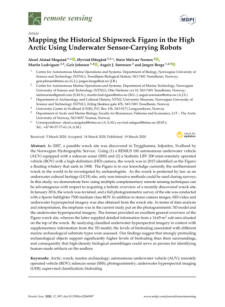

Author: Artur Grzadziel
This study focused on identifying a massive shipwreck in the
Baltic Sea using remote sensing technology, specifically side-
scan sonar and scanning sonar. The methodology,
challenges, and results of the study are described in the
report, emphasizing the effectiveness of the proposed
approach in obtaining accurate measurement data and
identifying the shipwreck with high confidence..

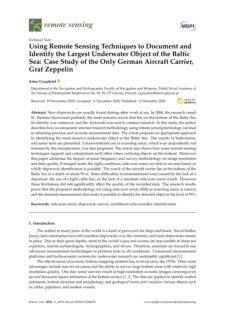

Authors:
(Maria Geraga, Dimitris Christodoulou, Dimitrios Eleftherakis,
George Papatheodorou, Elias Fakiris, Xenophon Dimas,
Nikos Georgiou, Stavroula Kordella, Michalis Prevenios,
Margarita Iatrou, Despina Zoura, Sofia Kekebanou, Makis
Sotiropoulos, and George Ferentinos
This document highlights the significance of underwater
cultural heritage (UCH) sites, particularly shipwrecks in the
Inner Ionian Sea in Greece, and emphasizes the need for a
protection framework to preserve these sites. It discusses the
methods used to study these shipwrecks, their historical
importance, and the threats posed by human activities such
as fishing.

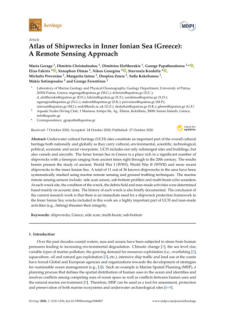

Author:
I A Kirichenko, I B Starchenko, V Y Vishnevezkiy, A I Markolia,
I I Sizov , & T P Strochan
This document presents studies on optimizing the
characteristics of an acoustic profiler with a parametric
transmitting array for applications in underwater
archaeology and the monitoring of underwater
engineering objects. It discusses the influence of real
conditions on the performance of parametric hydro-acoustic
systems, the necessary amplification range to compensate
for acoustic wave propagation losses, and the required
acoustic power for effective penetration into marine
sediments. It also suggests designing and constructing a
parametric profiler based on these theoretical investigations.

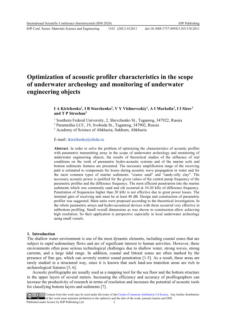

Author: Joanne Edney, Kay Dimmock, and William E. Boyd
The text intends to convey the importance of
understanding wreck divers' characteristics, motivations, and
attitudes to manage underwater wreck sites effectively. The
text emphasizes the need to balance heritage conservation
and tourism to ensure quality diving experiences while
protecting underwater cultural heritage. It also highlights
the outcomes of an international survey of wreck divers,
which can inform management strategies and destination
marketing..

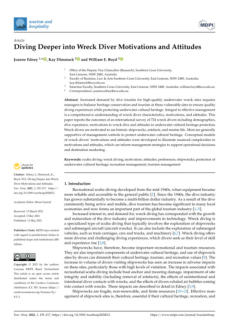

Author: Joanne Edney, Kay Dimmock, & William E. Boyd
This study aims to understand the behavior of wreck divers
at underwater heritage sites. The study highlights the
limitations of conventional observation methods and
proposes the use of wearable cameras for video observation
to gain more detailed insights into diver behavior. The
findings from the video analysis are intended to inform
heritage and tourism management decisions and provide a
baseline for future research.

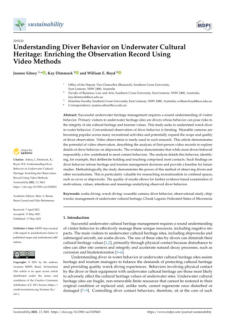

Author:
Carlota Pérez-Reverte Mañas, Felipe Cerezo Andreo, Pablo
López Osorio, Raúl González Gallero, Luis Mariscal Rico, &
Alicia Arévalo González
This document aims to inform about the positive economic
impact of public access to underwater and maritime cultural
heritage (UCH and MCH) and present the advancements
made by the University of Cadiz in enhancing this heritage
through new technologies. The text highlights the work
done within the TIDE and Herakles Projects, including
developing tourism activities such as accessible underwater
heritage routes, virtual reality applications for dry dive
experiences, and streaming of underwater archaeological
works.

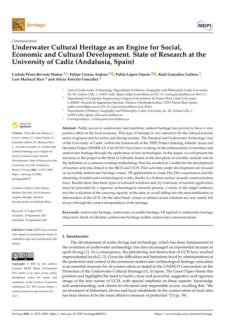

Authors: Kyra A. Price, Cody E. Garrison, Nathan Richards,
and Erin K. Field
Shipwrecks serve as artificial reefs and offer a surface for
various life forms, especially microbial communities. This
study focused on the Pappy Lane shipwreck to assess
microbial community differences. Samples showed
shipwreck microbes were more similar to each other than
to surrounding environments. Variations were noted in
microbial communities on corroded versus non-corroded
debris. Iron-oxidizing bacteria linked to deterioration were
abundant on corroded samples. A new strain was isolated
and found to potentially support nutrient cycling in the
ecosystem. Understanding these communities can aid in
shipwreck preservation efforts.

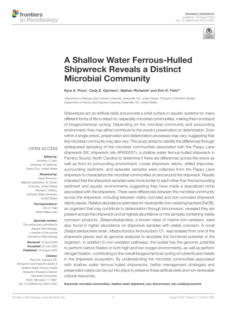

Authors:
Yeqing Han, Xinduo Huang, Yu Wang, Jing Du, Kaixuan
Ma, Yue Chen, Naisheng Li, Zhiguo Zhang, and Jiao Pan
The Nanhai No. 1 shipwreck is a Chinese merchant ship
from the Southern Song Dynasty, currently housed in a
glass warehouse at the Maritime Silk Road Museum in
Guangdong Province. The ship's hull is still being excavated,
and some wood is soaked in a solution for desalting. This
study analyzes the fungal community in both exposed and
soaked wood. We collected various samples and found
fungal structures using microscopes. The dominant fungi
were Fusarium sp. and Scedosporium sp. , with F. solani
and S. apiospermum posing a significant threat to
preservation. These findings help in the protection of
shipwrecks and similar artifacts

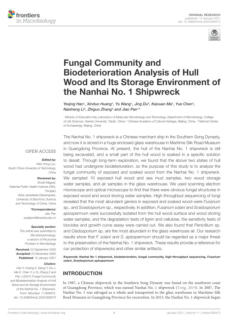
Underwater archeology - Papers from 2020 to 2021



















